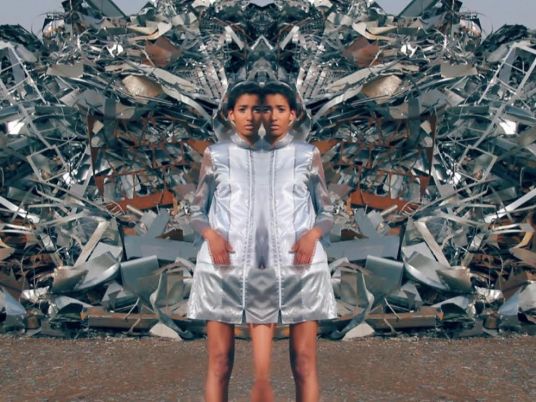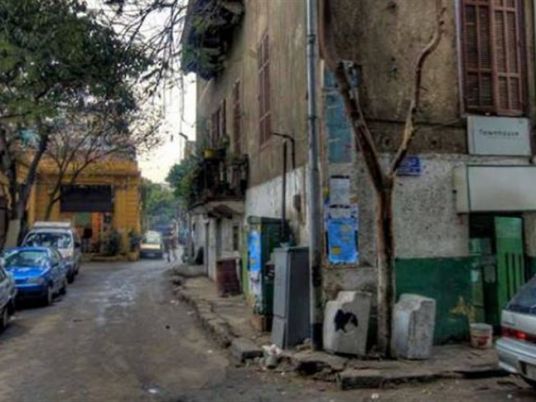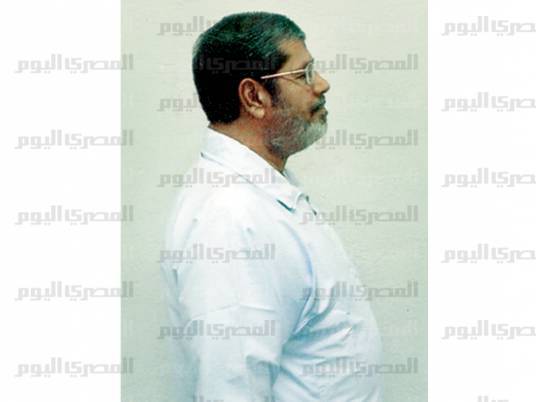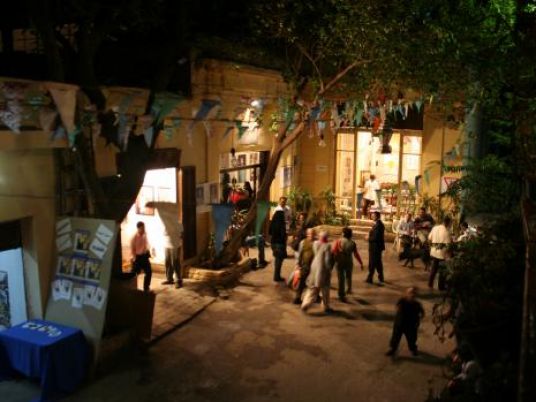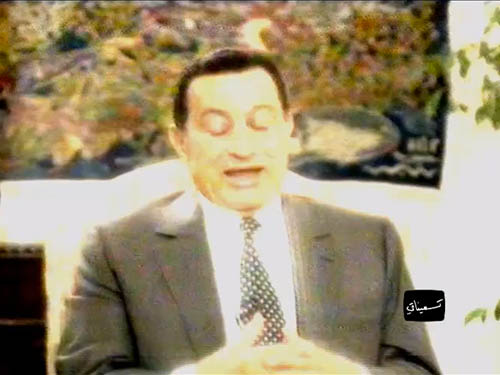
Nostalgia is such a confusing feeling. You listen to a sweet song and it makes you feel bad because it reminds you of your ex, or you love a tasteless unhealthy meal because it reminds you of your mother’s cooking and being a child.
“My Nineties: A Panorama of Collective Memory Televised,” which consists of a documentary film, a book, a live audio-visual performance, a Facebook group, and a video installation at the Townhouse Gallery, cracks open a treasure trove of common feelings shared by the hundreds of young people who attended its opening. It achieves this by playing the nostalgia card, while also making some rather more thought-provoking moves.
The on-going video installation, as well as the documentary and the performance, rely on a number of VHS tapes recorded in the 1990s. They are selected from a vast collection gathered by the artist Mohamed Allam, the “My Nineties” project manager. The weird fashion styles, musical trends, and tricks of TV directors of that period are very strongly present, alongside a subtle political and cultural analysis of an era that grew ancient very suddenly.
If you were a child in Egypt in the nineties, you most likely spent a lot of time watching TV, the very same kind of TV that almost all of your neighbors, schoolmates and relatives were watching. It was a time of poverty, depression, and confusion. People wanted to stay at home and watch something, but there weren’t many options. Two main channels addressed the 60 million people living in the country, and they were funded by government money and heavily monitored by its officials.
Watching TV at that time was very similar to being spoken to by a parent. There was a lot of being told off, and a lot of lies. It was pretty clear that TV wanted people to do one thing – stay quiet – and there was one thing it wanted people not to do – join the Muslim Brotherhood. Obviously it wasn’t a very successful mission.
These previously vague notions crystallized as Andeel watched the craziness of what was on TV at that time in “My Nineties.” In the pleasantly simple video installation there are nine old TV sets scattered around four rooms connected to old VHS players. On one of them, of course, is a long TV interview with the long-ruling former President Hosni Mubarak. The TV showing Mubarak is the biggest, without any seating in front of it, and it is in the first and largest room you enter. It reminded Andeel why he hated Mubarak that much before he was turned by revolution into that monster: the man was incredibly boring.
Mubarak’s absolute absence and the uniform, fixed way in which he is spoken about since the 25 January uprising has mythologized the story a bit. Watching him talking is very real and orientating. It helps understand the present and why we are here.
Other TV sets were showing bits of variety programs, a football game, sections of a soap opera, and loads of music videos that made Andeel feel like there’s a specific job that somebody should be paid to do making sure that things will not look that ridiculous only 20 years later. The madness of TV commercials’ decadent, hypnotizing efforts to convince people to buy this cleaning product or that chocolate bar clearly show that the country was being pushed toward a deformed capitalist model after decades of deformed socialism.
The tapes were presumably recorded by various kinds of people, and some tapes were clearly recorded over several times, resulting in unlikely montages. Why on earth someone would want to record these things is a question that pops up repeatedly.
The documentary, by Emad Maher, is both hilarious and illuminating. It features a director, an actor, a cameramen, and a sound engineer talking about Egyptian TV in the nineties. Mubarak again is a constant, central presence: his pumping increasing amounts of money into TV productions, perhaps in part due to his famous love of TV stars; his tactic of allowing just a little bit of opposition; the superficial, flashy modernization that went on in the country, which left the population shocked and entertained but otherwise untouched.
The book, designed by Adham Bakry to look exactly like a rather worn VHS tape, features informative text by journalist Hassan al-Halougy alongside fuzzy screenshots of TV stars. The author quotes academic studies, articles and interviews alongside his own commentary to create a detailed narrative of what TV was like at the time, how it was made, and what people thought of it.
In Mohamed Allam and Rami Abadir’s 30-minute performance on the exhibition’s opening night, they mixed music made now with a projection of video material from the nineties, using two VHS players and an old nineties analog mixer. Clips dug triangular shapes into each other and rotated in a goofy way. Dramatic scenes from soap operas were slammed into verses of pop hits, jingles from TV ads merged with TV presenters’ dresses and hairstyles. It seemed that with every cut and every mix the audience cheered with joy and excitement. It was obvious that they were reminded of lovely moments when they were small and worry-free. Jolly songs and playfulness are as comforting as bad makeup and ugly dresses. Milk boiling over in a commercial for a cooker made people laugh as much as Mubarak talking about Egypt’s problems with his voice made into a high-pitched squeal.

